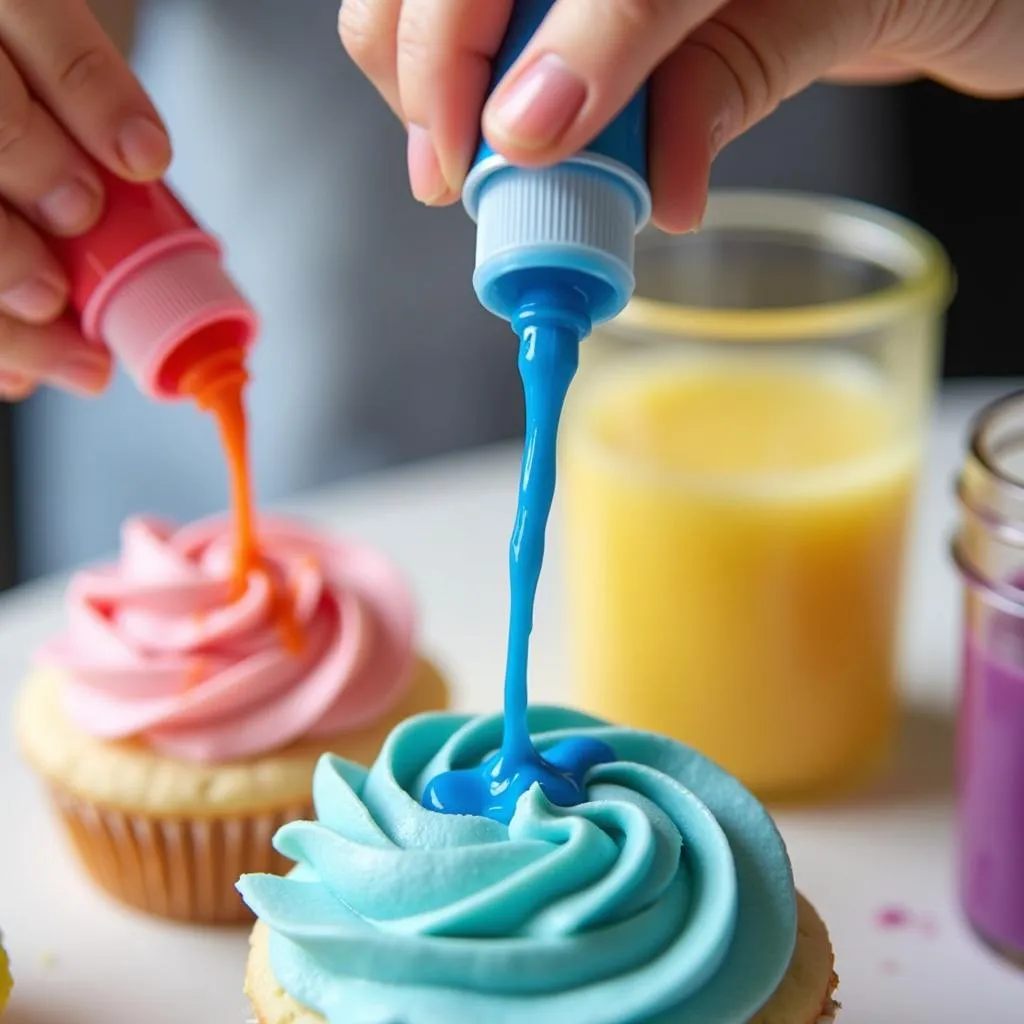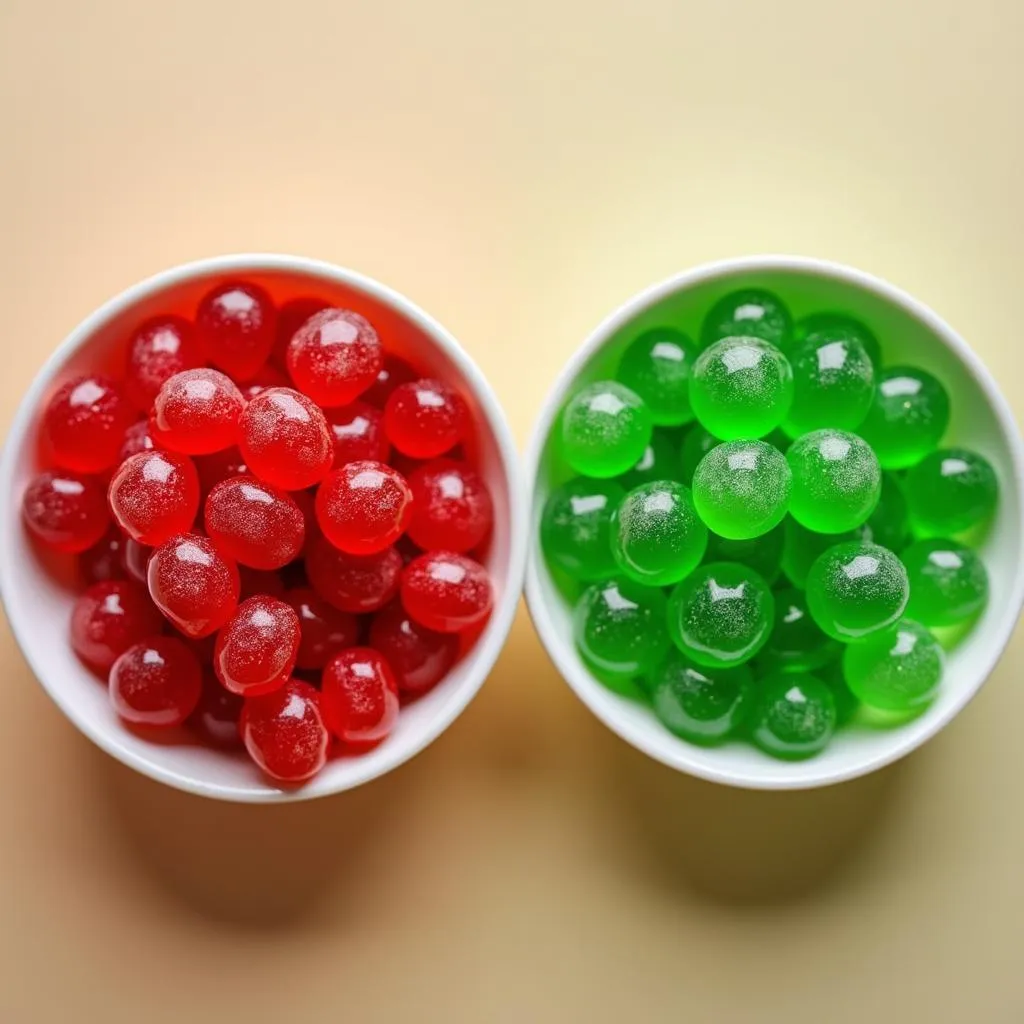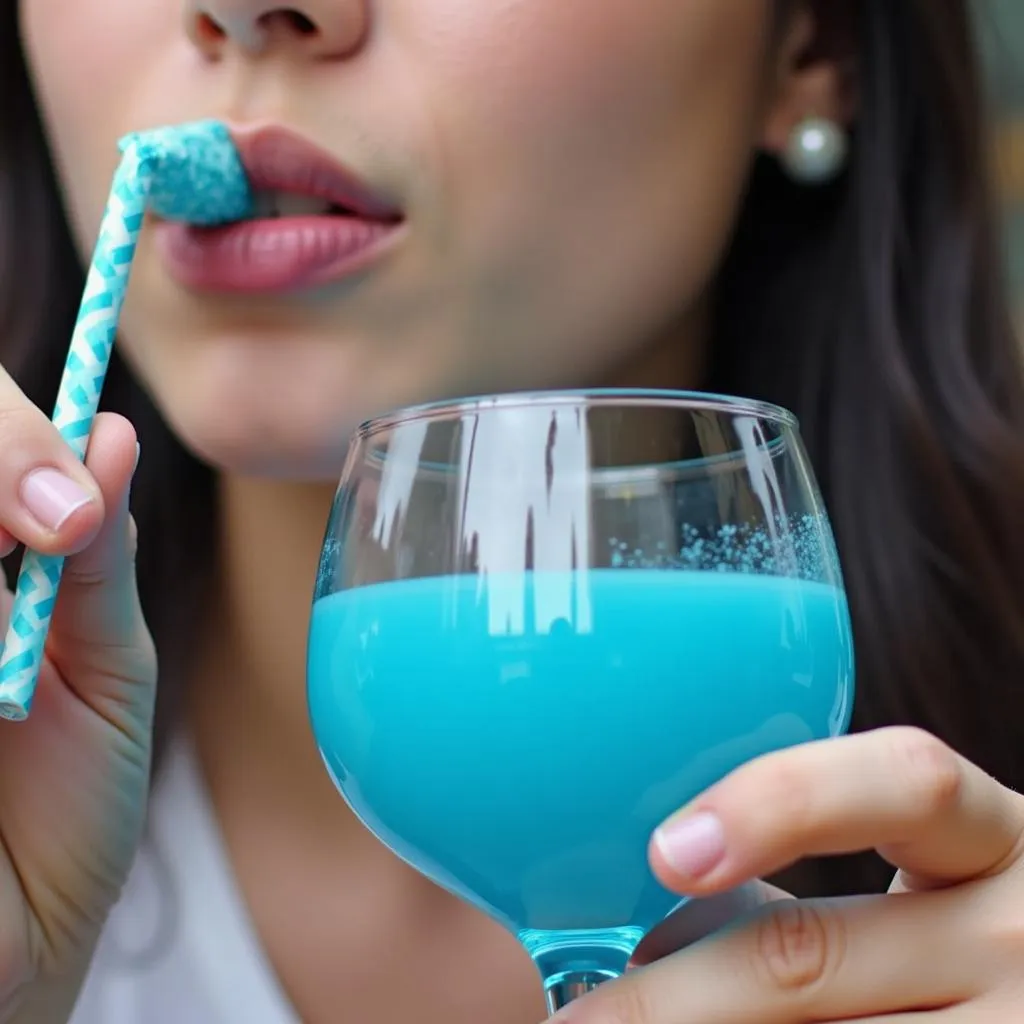We’ve all been there – mesmerized by a vibrant blue raspberry ice pop or a shockingly pink strawberry frosting, wondering, “Does food color have a taste?” It’s a valid question! After all, we eat with our eyes first. But does that vivid hue translate into a flavor explosion on our taste buds? Let’s dive into the colorful world of food coloring and uncover the truth.
The Science Behind Food Coloring
Food coloring, in its simplest form, is designed to enhance the visual appeal of food. It’s all about making things look more appetizing. Think about it – a dull-looking cake doesn’t quite scream “eat me!” the same way a vibrantly decorated one does.
 Food coloring drops in various colors
Food coloring drops in various colors
There are two main types of food coloring: natural and artificial. Natural food coloring is derived from edible sources like fruits, vegetables, and spices. For instance, the deep red color in some jams comes from beets, while turmeric provides a vibrant yellow hue. On the other hand, artificial food coloring is synthetically produced in labs. These are often more vibrant and stable than their natural counterparts.
Does Color Influence Our Perception of Taste?
While food coloring itself might not have a distinct taste, numerous studies suggest that color plays a significant role in how we perceive flavor. Our brains are hardwired to associate certain colors with specific tastes. For example, we naturally link red and pink with sweetness, green with sourness, and yellow with citrus flavors.
 Red and green candies in separate bowls
Red and green candies in separate bowls
This phenomenon is why a bright red cherry-flavored drink might taste “more cherry” than a pale pink one, even if the flavoring used is identical. Our brains are tricked into expecting a more intense flavor based on the color cue.
The Truth About Food Coloring and Taste
Here’s the bottom line: Generally, food coloring itself doesn’t have a taste that you’d perceive independently. However, it can indirectly influence your taste perception by triggering pre-existing color-flavor associations in your brain.
 A person enjoying a blue cocktail
A person enjoying a blue cocktail
Think of it as a subtle psychological nudge. The vibrant color sets the expectation for a certain flavor profile, and your brain fills in the blanks.
FAQs About Food Coloring and Taste
Q1: Can food coloring change the taste of food?
While the coloring itself doesn’t have a distinct taste, it can influence your perception of flavor due to pre-existing color-flavor associations in your brain.
Q2: Why do some food colorings seem to have a taste?
Some people might perceive a slight aftertaste from certain food colorings, especially artificial ones. This is often due to the chemical composition of the coloring agent and not an intended flavor.
Q3: Are natural food colorings healthier than artificial ones?
Both natural and artificial food colorings are considered safe for consumption when used within regulated limits. However, some individuals might have sensitivities or allergies to specific ingredients in either type.
Q4: Can I make my own natural food coloring at home?
Absolutely! You can extract natural colors from various fruits, vegetables, and spices to create your own food coloring. For example, beets can yield a beautiful red, spinach a vibrant green, and turmeric a sunny yellow.
Q5: Is it safe to consume food with artificial food coloring?
Regulatory agencies like the FDA have strict guidelines for the safe use of artificial food colorings. When used within these limits, they are considered safe for consumption by the general population.
Need Help with Colors? We’re Here for You!
Do you have more questions about color or need help choosing the perfect palette for your next project? Contact Color Box Hà Nội today! Our team of color experts is here to guide you. Call us at 0373298888, email us at [email protected], or visit our showroom at 86 Cầu Giấy, Hà Nội. We’re available 24/7 to assist you with all your color needs!

